Chatter Marks
Chatter Marks is a podcast of the Anchorage Museum, dedicated to exploring Alaska’s identity through the creative and critical thinking of ideas—past, present and future. Featuring interviews with artists, presenters, staff and others associated with the Anchorage Museum and its mission.
Episodes

Thursday Aug 31, 2023
EP 68 Frances changed my life with John Gourley
Thursday Aug 31, 2023
Thursday Aug 31, 2023
John Gourley is the lead singer and rhythm guitarist of Portugal. The Man. He grew up in a cabin in Trapper Creek, Alaska, living close to the land. His parents ran the Iditarod — a 1,000 mile-long sled dog race through some of the most treacherous conditions in the world. It takes skill, endurance and fortitude. For John, it’s a lot like being in a band, but instead of making it to Nome, they’re trying to make it to their next gig. It’s its own endurance race that really only considers the present. It’s a lifestyle that lands somewhere between frugality and stardom. Between spending a dollar a day on food in their leaner times and performing at Red Rocks and Radio City in times of prosperity. It’s been a journey that was never about winning a Grammy or critical acclaim, it was always about the music.
John says that when he writes music, he thinks of snowboarding. Of cliffs, jumps, rollers and powder. Hatcher Pass — the mountains John grew up hiking and riding — is in his rhythm and the lyrics. That association is intuitive for him. Simply put, throwing yourself off a cliff or off a jump is like throwing yourself into music and performing. Sometimes you lose and sometimes you win. But you learn from your failures and you’re buoyed by your wins. And it’s in those winning moments that give you the strength and the reassurance to continue. Like snowboarding or the Iditarod, there are always gonna be struggles, but it’s how you work through those struggles that define you.
This new album, “Chris Black Changed My Life,” was marked by struggle and uncertainty. Three band members went to rehab, John broke his jaw, their good friend Chris Black passed away and John and Zoe’s daughter Frances was diagnosed with DHDDS, a rare neurodegenerative disease. It’s been a lot, and navigating it is ongoing. The three who went to rehab are doing much better now and John’s jaw is on the mend. Chris is missed and thought about often, and after an exhausting amount of research, Frances is in treatment.
Photo by Maclay Heriot
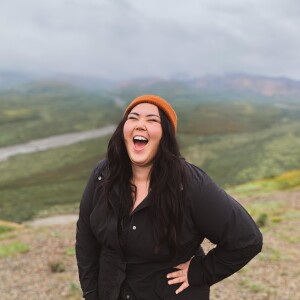
Sunday Jul 30, 2023
Ep 67 Culture comes from our environment with Cordelia Qiġñaaq Kellie
Sunday Jul 30, 2023
Sunday Jul 30, 2023
Cordelia Qiġñaaq Kellie specializes in cross-cultural communications. It’s a position that gives her the space and the opportunity to learn about how cultures interact at the community level. For the last two years, she’s worked as the Special Assistant for Rural Affairs for Senator Lisa Murkowski, where she helps to build and strengthen regional and statewide rural and Alaska Native relationships.
She says that in her line of work people often use the term “cultural conflicts” to describe disagreements that arise because of different values and belief systems. However, she prefers the term “cultural contrasts” because not all the time do those things conflict. She gives an example: Whenever her mom’s Inupiaq family would visit, she was expected to tend to and revere her elders, whereas when her dad’s parents would visit from Washington state they wanted to tend to the children. She recognized that these behaviors weren’t in conflict, each one just had a different set of expectations. So, it’s important to learn and to talk about the contrasts before they become conflicts. It comes down to recognizing, understanding and respecting other cultures — their values and their tenets.
Cordelia grew up in Wasilla. The first time she visited the lands of her heritage — Utqiagvik and Wainwright — she was a young adult. She remembers seeing the environment that her mom had been describing to her for so long and how striking it was. Her biggest takeaway was seeing other Inupiaq people. It was her first time in an Inupiaq community and so much of it reminded her of her family. It gave her an incredible sense of belonging because until that point the only other Inupiaq people she encountered were part of her family. It was the first time she realized that she was part of this bigger network of people.
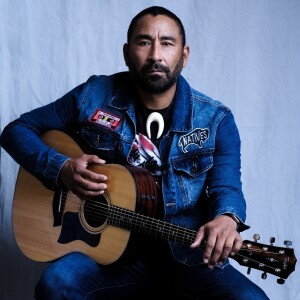
Sunday Jul 23, 2023
EP 66 Inuit soul music with Qacung
Sunday Jul 23, 2023
Sunday Jul 23, 2023
Qacung and his brother, Philip, started Pamyua almost 30 years ago. The idea was to honor both sides of their heritage — African American on their dad’s side and Yupik Inuit on their mom’s side. The gospel music they heard in church and the traditional songs and dancing they experienced in their Native communities made a powerful impression on both of them. In fact, Pamyua’s sound would eventually be called tribal funk or Inuit soul music, and their performances looked a lot like a traditional ceremony with music and dance. The idea connected with people from the very beginning. Two weeks after they came up with the idea for Pamyua, they were performing in front of high school audiences, including the school they both graduated from, Wasilla High School. There were ten shows in all and they received $1,000 for all of their performances.
The only doubt Qacung and his brother, Philip, had in the beginning of Pamyua was whether or not their elders would accept it. They understood that they were making drastic changes to traditional dances and traditional songs. Their elders’ stamp of approval came quickly, though, and from that point on they never had any doubts that people would accept and enjoy their music and their performances. Qacung says this is because music is an international language, you don’t need to understand the Native languages being spoken or sung to receive its message.
Qacung says that he and his brother have become uncles to up-and-coming Native artists. They share industry knowledge, opportunities and even their own pitfalls throughout the years so that future generations have a better understanding of what works and what doesn’t work. It’s a position he takes pride in. He loves being able to advocate and support new artists on the ins and outs of the business end of things because it’s something he and Philip didn’t have.
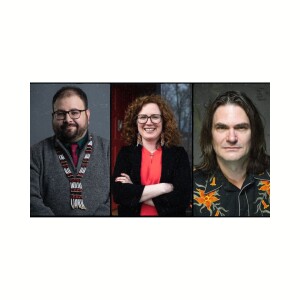
Wednesday Jun 28, 2023
EP 65 Anchorage made me who I am today
Wednesday Jun 28, 2023
Wednesday Jun 28, 2023
Aaron Leggett is the president of the Native Village of Eklutna and the Senior Curator of Alaska History and Indigenous Culture at the Anchorage Museum. He grew up in Anchorage, so his memories of it involve all of the memorable and formative experiences that made him who he is today. The same is true for the other two people joining the conversation, Julia O’Malley and David Holhouse. They’re both longtime journalists from Alaska and from pretty much the beginning of their journalism careers, they were the voice of the people. Alaskans who reported on cultures and countercultures, crime, food and anything else newsworthy that happened in their close-knit community.
At its core, this is a conversation about what a place means to its inhabitants. How it shapes and molds them. It’s about why David, Julia, Aaron and myself all continue to try and capture the Anchorage we grew up in, before Alaska was so connected to the rest of the world. For my part, I’ve spent a lot of time trying to capture the essence and the feeling of the Alaska snowboard and skateboard scene of the 90s and early 2000s. Holthouse talks about his memories of the Anchorage punk scene in the mid-90s, another lively and sometimes provocative group of people. Aaron remembers a heavy metal group of Alaska Native guys who wore leather jackets, had long hair and smoked cigarettes. They were metal and they were Native. When recalling these stories, there’s fondness, melancholy and nostalgia — a feeling Julia says is a cousin of grief. That if you become too nostalgic, you might lose track of how to listen to the present moment.
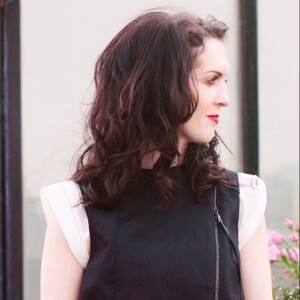
Saturday Jun 17, 2023
EP 64 A responsibility to be optimistic about the future with Mary Mattingly
Saturday Jun 17, 2023
Saturday Jun 17, 2023
Mary Mattingly is an interdisciplinary artist who builds sculptural ecosystems that address human consumption and resilience, with an underlying theme of how they might play into our ability to preserve through catastrophic events. Two of her past projects — Waterpod and Swale — were barges that periodically docked in certain areas of New York City. Both depended on a level of nomadism and self-sufficiency. She describes Waterpod as a self-sufficient living space on the water that was a shelter, grew its own food, cleaned its own water and was also a space where she could make artwork. Swale came next. It was an edible landscape and it applied many of the skills she’d learned from Waterpod. Things like navigating a large vessel though city waterways and how foraging for fresh foods could work in a city with so many rules and regulations.
Her artwork always comes from a personal place. In 2008, after numerous surgeries and trips to the hospital, she was diagnosed with Celiac disease. It was a painful journey. For so long, she didn’t know what was wrong with her. So, the diagnosis was a relief. She finally had a word to attach to what she was experiencing. That’s when she became interested in food. Specifically, she became aware of the inaccessibility to fresh foods — how expensive they are and how many rules and regulations prohibit people from growing their own food in public spaces. At one point, she learned about how a community garden had been shut down due to a real estate development. That was when she realized that spaces like that weren’t protected and could be easily taken away.
Her interest in the idea of consumption and resilience goes back to her childhood, when she didn’t always have the things she wanted. She was born in Rockville, Connecticut, but she grew up in Summersville. Both are small towns that are close to nature. She tells this story about how, when she was a kid, she and her siblings would make a game out of running as fast as they could to reach a neighbor’s barn before he let off a warning shot. So, when she moved to New York City, where manmade structures dominate the landscape and overconsumption is common, she began to think about how that affects us, how being so reliant on outside inputs can deprive us of our independence. The sheer scale of the trash cycle in New York City, for example, devastated her. Three nights a week, she would see trash piled up on the sidewalks, sometimes taller than her.
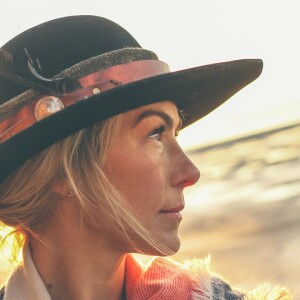
Sunday May 14, 2023
EP 63 All or nothing with Rosey Fletcher
Sunday May 14, 2023
Sunday May 14, 2023
Former Olympian Rosey Fletcher grew up in Girdwood, Alaska, and remembers having an unconditional love for snowboarding. The riding, the friendships and the competition. There was nothing she wanted to do more and she had aspirations of being the best. So, she worked three jobs to pay for her coaching lessons — the video store in Girdwood, The Bakeshop, and a little restaurant in Bird Creek. As she got better at snowboarding and at competing, she started winning local competitions. Then, when she started winning those local competitions, she was invited to national competitions. When she started winning those, she was invited to competitions where she competed against the best in the world.
She competed for 15 years, from her late teens into adulthood. In that time, she reached the podium locally, nationally and globally. She received silver medals at the World Championships, World Cup gold medals, and a Bronze medal in the 2006 Winter Olympics. That same year — in 2006, at the Olympics — she made a decision to leave the world of competitive snowboarding. It was a quiet exit. She didn’t make a big deal out of it and she didn’t tell anyone. Instead, she savored everything about the experience — the stops at ski resorts, the hotels, the people she met and her fellow competitors. To this day, she doesn’t regret her decision to leave because she accomplished what she set out to accomplish.
She says that her strongest attribute is her perseverance. How whenever she’s faced with life’s obstacles, she keeps going. When she left the competitive snowboard scene, for example, she jokes that she didn’t have any life skills and that she barely knew how to boil water. So, she made a point of learning how to cook. Now, she loves everything about the process of cooking, down to the meditative practice of preparing the food. That same passion goes into her work as a health and wellness instructor. She approaches it like an athlete. She only gets an hour with her clients and she intends to use that time to its full potential.
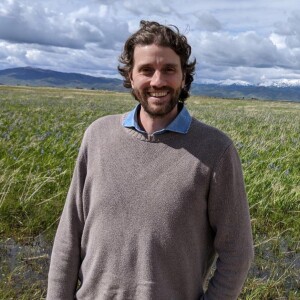
Friday May 05, 2023
EP 62 Alaska history from the bottom up with Ian Hartman
Friday May 05, 2023
Friday May 05, 2023
Historian Ian Hartman is an Associate Professor and Department Chair at the University of Alaska Anchorage. He teaches history from the bottom up, meaning he looks for how regular, working class people have been agents of change throughout history. This is the opposite of how so much of history has been recorded, which has looked at it through the perspective of The Great Man Theory. The Great Man Theory, as it relates to history, looks at leaders and other perceived great men as heroes and the sole agents of change. Ian points to the Civil Rights movement and the general cultural upheavals of the 1960s and 1970s for shifting our understanding of history.
Ian is also a public historian known, most recently, for his work on the history of the Alaska Railroad and a book he co-authored with Alaska public historian David Reamer about the history of the black experience in Alaska. The book, Black Lives in Alaska: A History of African Americans in the Far Northwest, details how Black men and women have participated in Alaska's politics and culture since before statehood. How Black history in Alaska is almost by default a history of the bottom up. It’s a history that involves racial discrimination, but also involves people mobilizing themselves in the face of that discrimination. How they were, and are, agents who are capable of forging social movements and solidarity. They rose up and involved themselves in the workings of the state.
His work on the Alaska Railroad will soon be on display — along with the work of other experts — at an Anchorage Museum exhibition titled All Aboard: The Alaska Railroad Centennial. The exhibition highlights crucial moments, technological innovations and human stories connected to the railroad and its operations in Alaska. An interesting fact about the people who originally worked on the Alaska Railroad is that the majority of them came from Alaska. They were already in the state working the Klondike Gold Rush and, when that ended, workers — who were generally young, single men — found more work helping to construct the railroad.

Wednesday Apr 26, 2023
EP 61 Being authentic and a fear of forgetting with Zane Penny
Wednesday Apr 26, 2023
Wednesday Apr 26, 2023
Musician Zane Penny says that every creative endeavor he’s been involved in has led him to where he is right now. It goes back to 5th grade, when his mom heard about an audition for a short film. Zane was interested, but he’d never acted before, so he was nervous. So nervous, and full of doubt, that he almost skipped the audition all together. But then, at the last minute, he decided to go. Everything else has flowed from that moment. More acting gigs, filmmaking, creating music and joining Vitus Collective, a group of young musicians and artists based in Anchorage.
Joining Vitus Collective was an important milestone for Zane. It introduced him to a group of likeminded youth and it also helped him realize the importance of young artists, that their message and their perspective matters. There was a problem though, there was nowhere for them to perform. So, in high school, Vitus began hosting all ages shows. These shows were a success, at times bringing in around 300 people. Reflecting on it now, Zane says that when kids have the opportunity to support their friends, they show up.
A big part of the music, for him, is the fashion that goes along with it. When he was younger, he wore clothes that made him stand out — a hood with bunny ears, tank tops and metal chokers. He looks back on those choices now and he laughs, but he understands that that was his way of expressing himself back then. In fact, he keeps a lot of those clothes around his house to remind himself of where he comes from. The clothes, and other pieces of his past, help him fight his fear of forgetting. This fear of waking up one day and realizing that the world has gone on without him. Everything is different, but he’s the same. He thinks this fear stems from some of his family’s issues involving alcoholism. So, in general, he stays away from alcohol, and instead focuses on the thing that helps quiet that fear, his music.


